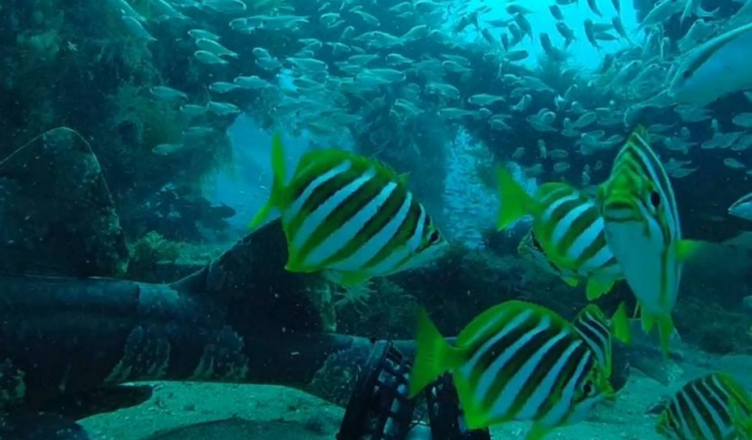The fishing community are becoming scientists by filming under the waves while fishing over reefs.
Recfishwest’s citizen science project Reef Vision is giving the WA fishing community a glimpse of the fish they are vying for.
But at the same time, they are also contributing to important science research.
Two artificial reefs were sunk 4 years ago off the coast of Bunbury and Dunsborough.
Since then, scientists have been monitoring the colonisation of them and any changes to the fish community.
Recfishwest Research Officer and artificial reef specialist James Florisson says the project is getting fishing communities engaged with science.
It’s also an extremely cost-effective way to gather large amounts of data over long time periods.
Volunteers throw a baited remote underwater video (BRUV) system out from their boat and record an hour of video footage over the artificial reefs while they are fishing.
The videos are then sent to Murdoch Uni and Recfishwest researchers for analysis.
BRUVs consist of a GoPro video camera attached to a weighted PVC frame with a baited arm and bait bag attached to a float on the surface by rope.
Purpose-built artificial reefs
The artificial reefs are purpose built and environmentally friendly.
Each reef is made out of 30 10-tonne cubes of steel-reinforced concrete modules in clusters of five.
They cover an area of 4 hectares, which once was a barren underwater desert.
They cover an area of 4 hectares, which once was a barren underwater desert.
James says the shape of the modules provides differences in shade, temperature and water movement.
This provides a complex habitat for a range of different species.
“Once algae, corals and invertebrates make themselves at home, fish and other species begin to gather. This kicks off the production of biomass in the food chain,” he says.
Videos reveal 79 species
So far, Recfishwest has received over 400 hours of footage from 212 videos from just 40 volunteers.
The videos have revealed 34,000 different individual fish from 79 species, including sawsharks, Samson fish, snapper and mulloway as well as a few extra surprises such as turtles.
“Volunteers absolutely love it, and a lot watch the footage straight away and share on Facebook—it’s a form of fishing of its own!”
“And the data shows us how well the artificial reefs are tracking and what’s growing on and around them,” James says.
“Traditional methods would have been cost prohibitive, so to have the community monitoring the reefs and producing rigorous ecological data is fantastic.”
Statewide expansion planned
Due to its success, Reef Vision is being expanded statewide.
Two new artificial reefs were recently set near Mandurah and Rottnest Island with others approved for Exmouth, Esperance and Dampier in 2018 and 2019.
The Rottnest Island ‘fish tower’ is a different design.
It’s a four-storey high (12 x 10 metre) mega structure under the water with a metal lattice-like frame and limestone fish caves on the bottom.
This makes it the perfect habitat for a range of species.
“After 6 months, we’ve already found 16 species on that reef,” James says.
“The reefs were deployed to provide safe, accessible and enjoyable fishing locations, and now anyone with a GoPro can become a scientist.”
Get involved
If you want to be a volunteer and part of the Reef Vision Research Team, email James, or for more information on artificial reefs in WA, check out Recfishwest’s website.
This article was originally published on Particle. Read the original article.
